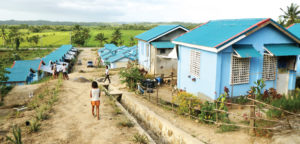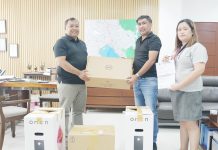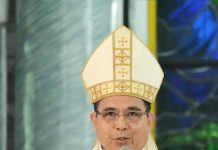
PALO, Leyte-The Roman Catholic Church has said that its P3.2 billion ‘Yolanda’ rehabilitation program in the Visayas was a ‘success.’
Fr. Edwin Gariguez, executive secretary of the National Secretariat for Social Action (NASSA)/Caritas Philippines, said that out of this fund, they have already constructed a total of 33,253 houses for the families who lost their houses due to the onslaught of super typhoon Yolanda in 2013.
The three-year recovery and rehabilitation program of the Catholic Church, which officially started in 2014, has reached 1.4 million people, Gariguez said.
The construction of 33,253 housing units were implemented directly by NASSA/Caritas Philippines, and bilaterally by Caritas Internationalis member organizations namely: Catholic Relief Services (CRS), Caritas Switzerland, Caritas Italiana, Caritas Belgium, Caritas Germany, Development and Peace-Caritas Canada, Caritas Austria, and Catholic Organization for Relief and Development Aid (Cordaid).
The number of shelters constructed per Caritas members includes NASSA/Caritas Philippines (7,373), CRS (20,000), Development and Peace (1,550), Caritas Switzerland (1,080), Caritas Austria (2,000), Caritas Germany (250), Caritas Belgium (300), Caritas Italiana (500), and Cordaid (200).
Jing Rey Henderson, NASSA’s communications and partnership development manager, said that the Caritas response benefitted the typhoon victims in Leyte, Samar, Eastern Samar, Palawan, Cebu, Iloilo, Aklan, Capiz, Antique and other areas hit by Yolanda.
The Church’s aid covers mainly on shelter, livelihoods, water, sanitation and health (WASH), community organizing, community-managed disaster risk reduction (CMDRR), ecosystems recovery, and institutional capacity building.
Meanwhile, Gariguez said that being able to build more than 30,000 shelter units speak of the dedication and commitment of the Catholic Church to better the lives and restore the dignity of the most vulnerable communities and families affected by Yolanda.
“We are very proud of this accomplishment, yet humbled by the experience,” said Gariguez.
On November 16 and 17, the Catholic Church, through NASSA/Caritas Philippines, hosted the 5th Typhoon Yolanda anniversary commemoration in Palo, Leyte.
NASSA/Caritas Philippines, the humanitarian, development and advocacy arm of the Catholic Bishops’ Conference of the Philippines, serves the 85 diocesan social action centers across the country while representing the Philippines to the Caritas Internationalis, the global confederation of Catholic charities.
(RONALD O. REYES)



